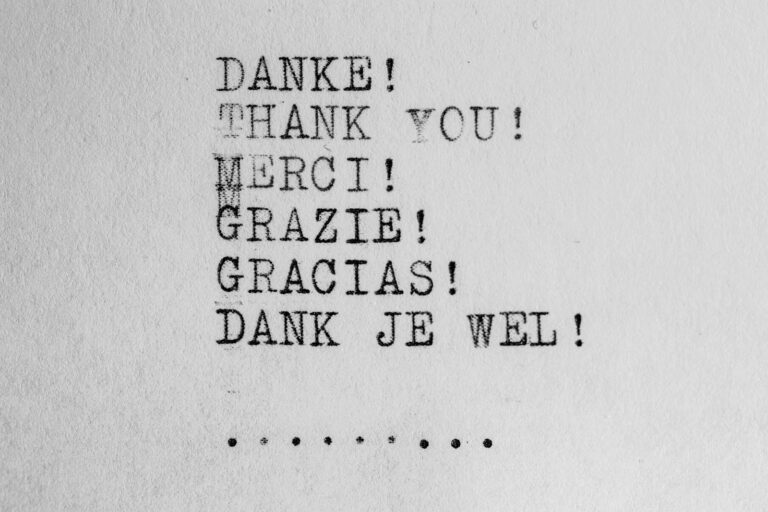How to Say “Best Friend” in Spanish: A Comprehensive Guide
Imagine you’re on a sun-soaked beach in Spain, the waves gently lapping at your feet. You’ve made a new friend, and after a few mojitos, you want to tell them how much their friendship means to you. But how do you say “best friend” in Spanish? It’s one of those moments where the right words can make all the difference.
In Spanish, the phrase for best friend is “mejor amigo” for a male or “mejor amiga” for a female. It’s simple yet powerful, just like the bond you share with your closest confidant. Knowing this can help bridge the gap and make your connection even more special.
Whether you’re planning a trip to a Spanish-speaking country or just want to impress your Spanish-speaking friends, learning these phrases can enrich your interactions. Let’s jump into the nuances of expressing friendship in Spanish and make those heartfelt moments even more memorable.
Mejor Amigo/a: The Standard Way to Say “Best Friend” in Spanish
“Mejor amigo/a” is the standard way to say “best friend” in Spanish. By breaking it down, you can understand how to use the phrase effectively.
Breaking Down “mejor amigo/a”
“Mejor” (Best) + “Amigo/a” (Friend)
“Mejor” translates to “best,” while “amigo/a” means “friend.” Combining these two words gives you mejor amigo/a (best friend).
Gender Agreement: Amigo (Male) vs. Amiga (Female)
Spanish nouns reflect gender. If referring to a male friend, use amigo. For a female friend, use amiga.
Using “mejor amigo/a” in Sentences
When expressing this term in sentences, you can make your interactions more authentic.
“Mi Mejor Amigo Se Llama Juan” (My Best Friend Is Named Juan)
Use this when talking about a male friend. For example, Mi mejor amigo se llama Juan means “My best friend is named Juan.”
“Ella Es Mi Mejor Amiga” (She Is My Best Female Friend)
This sentence applies when referring to a female. For instance, Ella es mi mejor amiga translates to “She is my best female friend.”
Pluralization: “Mejores Amigos/as” for Multiple Best Friends
To refer to multiple best friends, pluralize the phrase:
Singular | Plural |
|---|---|
Mejor amigo | Mejores amigos |
Mejor amiga | Mejores amigas |
Mejor amigo/a | Mejores amigos/as |
Why does knowing these terms matter? It enriches your interactions and deepens connections, especially if exploring Spanish-speaking cultures. Imagine telling your friend Juan, “You’re my mejor amigo,” and watch his face light up. Simple yet profound.
Regional Variations of “Best Friend” in Spanish

Learning how to say “best friend” in Spanish isn’t just about understanding the words; it’s about connecting with people and their cultures. Let’s explore how different Spanish-speaking countries express “best friend.”
Spain: “Mejor colega” or “amigo/a del alma”
In Spain, you might hear someone refer to their best friend as “mejor colega”. It literally means “best colleague,” but it’s used affectionately among friends. For an even deeper connection, “amigo/a del alma”, meaning “soul friend,” is a beautiful term that emphasizes a profound bond.
Mexico: “Cuate/a” or “compa”
In Mexico, you’ve got some fun options. “Cuate/a” is a casual term for a close friend. It’s like saying “buddy.” “Compa” is another informal word that feels like calling someone “pal.” Of course, “mejor amigo/a” still reigns supreme when talking about your absolute closest friend.
Argentina: “Mejor amigo/a” or “amigo/a del alma”
Argentina keeps it simple yet heartfelt. “Mejor amigo/a” is straightforward and means “best friend.” If you’re talking about someone who’s your confidant and lifeline, “amigo/a del alma” is perfect.
Colombia: “Parcero/a” or “mejor amigo/a”
In Colombia, “parcero/a” is a popular slang term. It’s like saying “mate” or “dude.” For more formal situations, “mejor amigo/a” works too. Imagine saying, “Este es mi parcero” (“This is my best buddy”) to introduce a friend from Colombia.
Country | Casual Term | Formal Term |
|---|---|---|
Spain | mejor colega | amigo/a del alma |
Mexico | cuate/a, compa | mejor amigo/a |
Argentina | — | amigo/a del alma |
Colombia | parcero/a | mejor amigo/a |
Isn’t it fascinating how these terms capture nuances and cultural vibes? Knowing these regional variations helps you connect on a deeper level, making friendships even more special.
Alternative Expressions for “Best Friend” in Spanish
When connecting deeply with Spanish-speaking friends, using the right term for “best friend” can make a big difference. Let’s explore these expressions, adding richness to your conversations.
Amigo/a íntimo/a (Intimate Friend)
Usage and Connotations
Amigo/a íntimo/a emphasizes a deep and close friendship. It’s more than just hanging out; it’s about sharing secrets and being there through thick and thin. Think of it as your go-to person in moments of joy and crisis. This term underlines an emotional connection that goes beyond the ordinary.
Examples in Context
Imagine telling someone, “Ella es mi amiga íntima.” It’s like saying she’s your confidante and emotional rock. You’re highlighting a friendship built on mutual trust and shared experiences.
Amigo/a de Toda la Vida (Lifelong Friend)
A amigo/a de toda la vida conveys a long-lasting, enduring bond. This friend has seen you grow and change, and yet, they remain a constant in your life. Endurance and history define this term.
Examples in Context
When you say, “Él es mi amigo de toda la vida,” you’re sharing that this friend has been with you through various life stages. It signifies that no matter where life takes you, this bond remains unbroken.
Compinche (Buddy or Pal)
Compinche is a casual, informal term. It’s perfect for expressing that easy-going, fun-loving friendship where you enjoy each other’s company without too many serious undertones. Think road trips, game nights, and inside jokes.
Examples in Context
“Él es mi compinche,” you might say to introduce your partner-in-crime. It captures that carefree camaraderie perfectly, spotlighting the joy and simplicity of the friendship.
Confidente (Confidant)
Confidente implies a friendship built on trust and confidentiality. This is someone you trust deeply, with whom you can share your most private thoughts. It’s a term that communicates a high level of emotional security.
Examples in Context
Saying, “Ella es mi confidente,” highlights that this friend provides a safe space for you to be completely honest without fear of judgment. It tells another person that this friendship is rooted in trust and mutual understanding.
Term | Usage | Example Sentences |
|---|---|---|
Amigo/a íntimo/a | Deep, close friendship | “Ella es mi amiga íntima.” |
Amigo/a de toda la vida | Long-lasting bond | “Él es mi amigo de toda la vida.” |
Compinche | Casual, easy-going | “Él es mi compinche.” |
Confidente | Trust, confidentiality | “Ella es mi confidente.” |
Connecting with friends in a meaningful way often requires more than just the right words. These expressions add emotional depth and context to your conversations, showing that you value and understand the nuances of your Spanish-speaking friendships.
Affectionate Terms for Best Friends in Spanish

Knowing how to express “best friend” in Spanish adds emotional depth to your conversations. It helps you connect with Spanish-speaking friends on a deeper level. Let’s explore some affectionate terms you can use.
Hermano/a del Alma (Soul Brother/Sister)
Hermano del alma and hermana del alma mean “soul brother” and “soul sister” respectively. These phrases convey a bond that goes beyond friendship, implying a chosen family member. Imagine having a friend who’s been with you through thick and thin, someone who feels more like family—this term reflects that deep connection.
Mi Media Naranja (My Half Orange)
Mi media naranja translates to “my half orange,” a phrase used to describe someone who completes you. While it’s typically used for romantic partners, it can also apply to a best friend who understands you perfectly. If someone asked, “Who’s that one person who just gets you?” this term beautifully encapsulates that idea.
Compadre/Comadre (Close Friend, Literally Co-parent)
Compadre and comadre mean “co-parent” but are often used to describe a close friend. This term implies a deep level of trust and mutual support, like that between godparents and parents. Think about a friend who’s always there to support you, almost like a sibling—that’s your compadre or comadre.
When And How to Use These Terms Appropriately
Using the right term can enrich your interactions with Spanish-speaking friends. You might refer to a long-time friend as hermano del alma or hermana del alma when you’re sharing a personal story. Use mi media naranja sparingly for non-romantic contexts to avoid confusion but feel free to use it when highlighting an irreplaceable connection. Call a supportive, dependable friend compadre or comadre during heartfelt moments or in casual chats to highlight your bond.
By using these terms, you show your friends how much they mean to you in a culturally resonant way. It also demonstrates your understanding and appreciation of their language and customs.
How to Introduce Your Best Friend in Spanish
Want to make a great impression introducing your best friend in Spanish? Whether you’re in a formal setting or just casually hanging out, nailing the introduction can deepen connections. Let’s explore some go-to phrases to help you share the bond with your “mejor amigo/a.”
Formal Introductions
Formal scenarios like meetings or gatherings call for polished language.
“Te presento a mi mejor amigo/a” (Let me introduce you to my best friend)
Use “Te presento a mi mejor amigo/a” when you first bring your friend into a conversation. It’s a suave way to introduce someone you deeply care about. Picture this: you’re at a classy event, cocktails in hand, and you proudly say, “Te presento a mi mejor amigo/a.” Instantly, it shows respect for both your friend and the new acquaintance.
“Este/a es mi mejor amigo/a de toda la vida” (This is my lifelong best friend)
“Este/a es mi mejor amigo/a de toda la vida” adds an extra layer of sentimentality. It’s perfect for situations like family gatherings. Imagine how touching it is to say this at a special event, relaying the depth of your lifelong friendship to everyone present. It signals not just friendship, but an enduring bond that impresses listeners.
Informal Introductions
In casual settings like cafes or beach outings, you’d want to express the same affection with relaxed language.
“Él/Ella es mi mejor amigo/a” (He/She is my best friend)
For a low-key, laid-back vibe, go with “Él/Ella es mi mejor amigo/a.” It’s a straightforward, yet powerful way to showcase your close bond. You might find yourself at a fun barbecue, pointing to your buddy and saying, “Él es mi mejor amigo” or “Ella es mi mejor amiga.” It’s simple, clear, and heartfelt.
“Conoce a mi mejor amigo/a” (Meet my best friend)
Want to add a dash of excitement? Try “Conoce a mi mejor amigo/a.” It’s inviting and enthusiastic. Imagine, you’re at a new city party, introducing your best friend you’ve known forever. You cheerfully say, “Conoce a mi mejor amigo/a!” It’s engaging and encourages further conversation.
Here’s a quick recap of these phrases for easy reference:
Spanish Phrase | English Meaning |
|---|---|
Te presento a mi mejor amigo/a | Let me introduce you to my best friend |
Este/a es mi mejor amigo/a de toda la vida | This is my lifelong best friend |
Él/Ella es mi mejor amigo/a | He/She is my best friend |
Conoce a mi mejor amigo/a | Meet my best friend |
Embrace these phrases and see how the right introduction can elevate your relationship, whether it’s formal or informal.
Expressing Friendship in Spanish Conversations

Want to talk about your best friend in Spanish? It’s not just about translating words; it’s about conveying the depth of your bond. Here’s how you can express friendship in Spanish conversations.
Talking About Your Best Friend
How often do you share stories about your best friend? In Spanish, you can do it with just the right touch of affection.
“Mi mejor amigo/a y yo siempre…” (My Best Friend and I Always…)
Think about all the things you and your best friend do together. Whether it’s binge-watching series or grabbing coffee every weekend, you can start with this phrase: “Mi mejor amigo/a y yo siempre…”. For example, you could say, “Mi mejor amiga y yo siempre hacemos caminatas por la mañana” (My best friend and I always go for morning walks). This sets the stage for sharing more about your fun times together.
“Cuento con mi mejor amigo/a para todo” (I Count on My Best Friend for Everything)
Feeling supported is a big part of any friendship. You might say, “Cuento con mi mejor amigo/a para todo” when talking about your best friend who’s always there for you. It’s an ideal way to show the trust you have in them. For instance, “Cuento con mi mejor amigo para los momentos difíciles” (I count on my best friend for tough times) gives a glimpse of the strength of your relationship.
Describing the Importance of Your Best Friend
Why is your best friend so special to you? Express it meaningfully in Spanish.
“Mi mejor amigo/a es como familia” (My Best Friend is Like Family)
We all have that friend who feels more like family than just a buddy. In Spanish, “Mi mejor amigo/a es como familia” captures this sentiment perfectly. For example, you could share, “Mi mejor amigo es como familia, siempre está ahí en los momentos importantes” (My best friend is like family; they’re always there during crucial moments).
“No Sé Qué Haría Sin Mi Mejor Amigo/a” (I Don’t Know What I’d Do Without My Best Friend)
Ever wonder how you’d manage without your best friend? Use “No sé qué haría sin mi mejor amigo/a” to articulate this. It’s a heartfelt way to honor their presence in your life. You might say, “No sé qué haría sin mi mejor amiga; siempre me da el mejor consejo” (I don’t know what I’d do without my best friend; they always give me the best advice).
Additional Phrases
To vividly describe your best friend, here are a few handy phrases:
English | Spanish |
|---|---|
You are my best friend | Eres mi mejor amigo/a |
We are friends for life | Somos amigos/as de por vida |
Remember, conveying the importance of your friendships in another language deepens connections and creates meaningful interactions. Whether sharing stories or expressing gratitude, these phrases will help you cherish your best friend in Spanish conversations.
Conclusion: Mastering “Best Friend” in Spanish
You’ve now got a toolkit of phrases to express the special bond you share with your best friend in Spanish. Whether you’re chatting with someone from Spain, Mexico, Argentina, or Colombia, you can use these terms to show just how much your amigo/a means to you.
Remember, using these expressions not only enhances your language skills but also deepens your connections with Spanish-speaking friends. So go ahead and sprinkle some of these heartfelt phrases into your conversations and watch your friendships flourish.
Happy chatting!
Frequently Asked Questions
How do you say “best friend” in Spanish?
“Best friend” in Spanish can be expressed as “mejor amigo/a.” Other variations like “amigo/a del alma” are used to signify a deep emotional connection.
Are there different terms for “best friend” in various Spanish-speaking countries?
Yes, different regions use varied terms. For instance, in Spain, “mejor colega” is common, while in Argentina, you might hear “amigo/a del alma.”
How can I describe the depth of my friendship in Spanish?
You can use phrases like “Mi mejor amigo/a y yo siempre…” (My best friend and I always…) or “Cuento con mi mejor amigo/a para todo” (I rely on my best friend for everything).
What phrases can convey the importance of a best friend in Spanish?
Phrases such as “Mi mejor amigo/a es como familia” (My best friend is like family) and “No sé qué haría sin mi mejor amigo/a” (I don’t know what I would do without my best friend) are commonly used.
Why is expressing friendship in Spanish significant?
Expressing friendship in Spanish helps deepen connections and creates more meaningful interactions, enhancing your relationships with Spanish-speaking friends.






